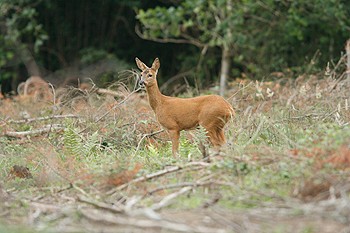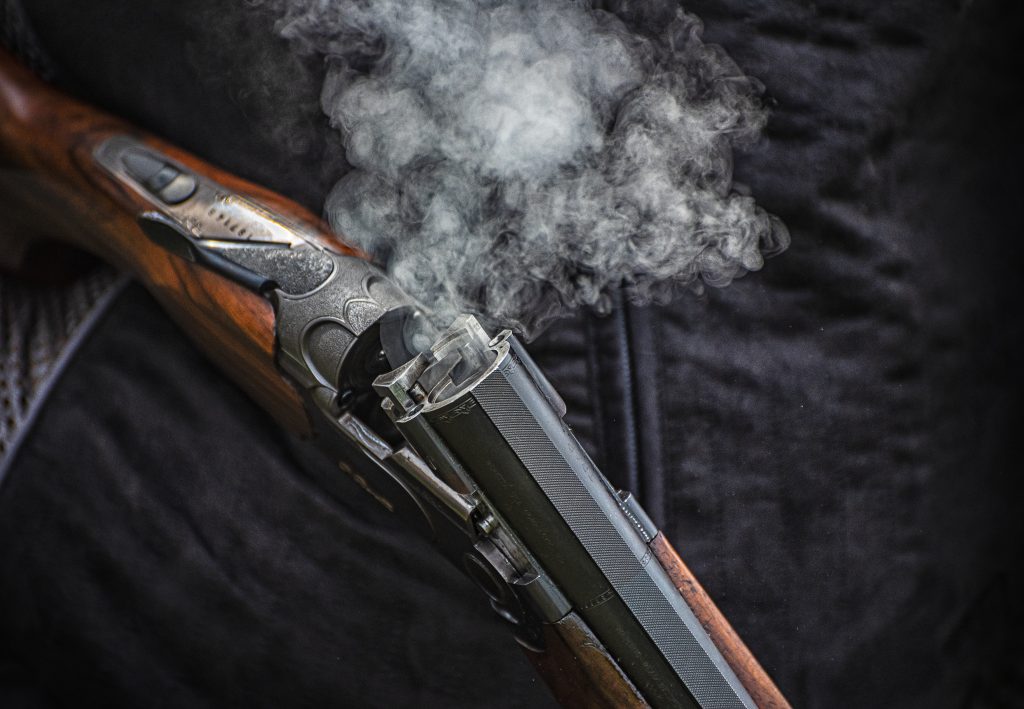Win CENS ProFlex DX5 earplugs worth £1,149 – enter here
The RSPB and deer management
The RSPB is doing the right thing with deer - it should tell its members too!

It’s not often that I am sympathetic with the RSPB when it is in difficulties, but I do understand its irritation at criticism over deer culling at Minsmere (News, 22 January). As usual, it is animal rights enthusiasts who are shouting loudly, while the RSPB defends itself on the grounds that the red deer population is destroying wildlife habitat and has no “natural predators” to exercise population control.
That said, I raised my eyebrows at the charity’s further statement that with our “relatively mild winters there is little mortality caused by frost and snow”. As any decent deer manager knows, cold weather mortality means starvation, and surely even the animal rights types recognise that a well-placed bullet is a more humane alternative.
As it happens, my little Dorset shoot has the RSPB as a neighbour, and there are deer issues for us too. Alongside the native roe, the local fallow population has increased and both muntjac and sika have colonised, making deer management harder and harder. In our own woods, the damage is there for all to see. Indeed, the main link hedge between our woods and the RSPB reserve has a distinct browse line at fallow nose height.
The society’s main objective has been to conserve and manage its delightful area of ancient semi-natural woodland in the traditional way, with high hopes for a return of breeding nightingales. There have been lots of experiments with different approaches to deer fencing too, but none of it has really worked, with the deer mostly holding the coppice regrowth in check. This is a serious problem, for this is the very habitat that the nightingales and other breeding warblers need.
Against this background, those of us who surround the reserve have been asking the RSPB to start a culling policy for some time. Aside from helping to achieve its own objectives, this would be helpful to the neighbours. For many years our situation has been that we get a bit of a cull early in the doe season, but then the deer become largely nocturnal; they rest up in the RSPB reserve during the day and venture out on to our ground at night, which makes the completion of a decent cull impossible.
Woodland woes
In the meantime, our woodland habitat has become poorer and poorer, with the vital shrub layer being denuded and regrowth from our modest coppicing activities being hammered. Even with protective measures, most of our works have been very slow to respond. Add the fact that it has become almost impossible to grow some of the more palatable covercrops, such as kale, maize and chicory, and you have a steadily more diffi cult story from the shoot management point of view too.
So, you can imagine my joy a year ago when I had a call from an old friend to say that the RSPB had finally recognised that it needed to act on the deer, and that he and another chum had been awarded the contract. By last March, the behaviour of the fallow had noticeably changed: instead of seeing big gangs, mainly at night, we started seeing more, but smaller groups, giving us an increase in the number of chances for a shot, even if the deer themselves were warier.
This winter has followed the same pattern, and I really do think that we have seen a reduction in the total fallow population. What we also have now is the opportunity for a cooperative approach in which we can be out at the same time on each side of the boundary. In this way, we can often move deer to and fro, avoiding giving them a sanctuary to run to at the first sign of stalking activity.
Interestingly, I have not noticed much sign that the RSPB has been overly public about this change to local policy. I get the feeling that it feels slightly embarrassed about organising the killing of wildlife on its reserves. Well, in my humble opinion, it has no need to be. As we all know, this is all part of the essential and responsible management that our countryside needs.
Funnily enough, I found myself doing a PR job for the society the other day as I waited for my younger son, Peter, at the school gates. In conversation with some of the other parents, I heard from one mum who had been off for a walk in the RSPB woods one morning, and who had found the temporary closure sign put up by the stalkers. While not exactly anti, she was wondering why a “conservation organisation was out killing wildlife”.
This gave me the perfect opportunity to explain the RSPB’s problem on its behalf, and also to elaborate on the value to the neighbours. Everyone agreed with this and they understood the harvesting part of the story too. Indeed, I dare to suggest that the RSPB is a tad too wary of its membership. Most are eminently sensible people who would understand the need for wildlife culling more generally, if only it were well explained and not swept under the carpet.
Related Articles
Get the latest news delivered direct to your door
Subscribe to Shooting Times & Country
Discover the ultimate companion for field sports enthusiasts with Shooting Times & Country Magazine, the UK’s leading weekly publication that has been at the forefront of shooting culture since 1882. Subscribers gain access to expert tips, comprehensive gear reviews, seasonal advice and a vibrant community of like-minded shooters.
Save on shop price when you subscribe with weekly issues featuring in-depth articles on gundog training, exclusive member offers and access to the digital back issue library. A Shooting Times & Country subscription is more than a magazine, don’t just read about the countryside; immerse yourself in its most authoritative and engaging publication.







